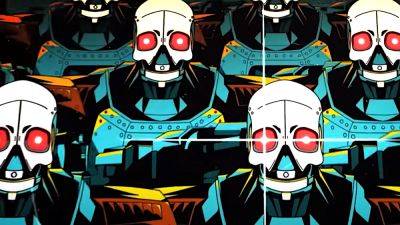John Romero says that what set Wolfenstein and Doom apart 'was our speed—the speed of the game was critical'
John Romero could be ordained as Pope, and people would still come up at mass and ask him about the early days of id Software and Doom. One of the key figures in early FPS history and by far the most infamous and outspoken, Romero's brand of hirsute grungy swagger worked for a very simple reason: the games he designed and promoted were brilliant (until they weren't).
These days Romero is head of Romero Games, currently working on an unannounced FPS, and has given an interview to Ars Technica about being known for Doom over three decades. Doom of course was the culmination of id's work up until that point, but that was standing on the shoulders of the successful Wolfenstein 3D, which itself had followed from the earlier id titles Hovertank One and Catacomb 3-D.
It's the latter title that Romero credits with opening his eyes. At the time id was best-known for its Commander Keen games, and were in the early stages of making another 2D side-scroller in that series. «Within two weeks, [I was up] at one in the morning and I'm just like, 'Guys we need to not make this game [Keen],'» Romero tells Ars. "'This is not the future. The future is getting better at what we just did with Catacomb'… And everyone was immediately like, 'Yeah, you're right. That is the new thing, and we haven't seen it, and we can do it, so why aren't we doing it?'"
Romero claims the team began work on Wolfenstein 3D that very night, but the principles id had followed in representing 3D space in its earlier titles would stand them in good stead. What set id's games apart «was our speed—the speed of the game was critical to us having that massive differentiation. Everyone else was trying to do a world that was proper 3D—six degrees of freedom or representation that was really detailed. And for us, the way that we were going to go was a simple rendering at a high speed with good gameplay. Those were our pillars, and we stuck with them, and that's what really differentiated them from everyone else.»
I'm







